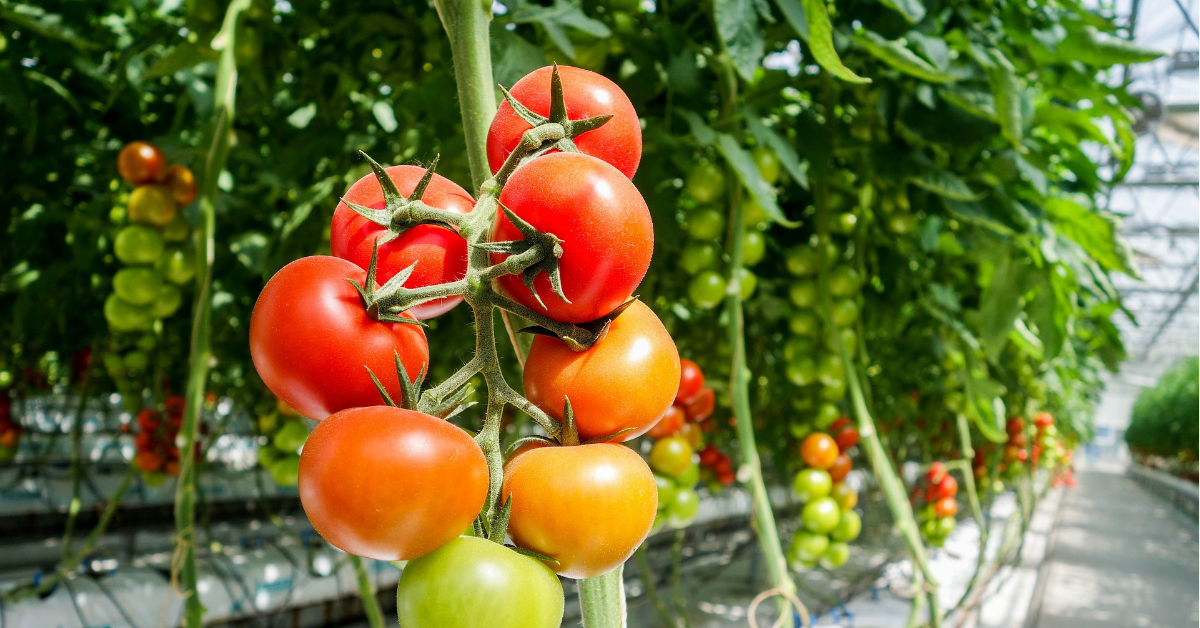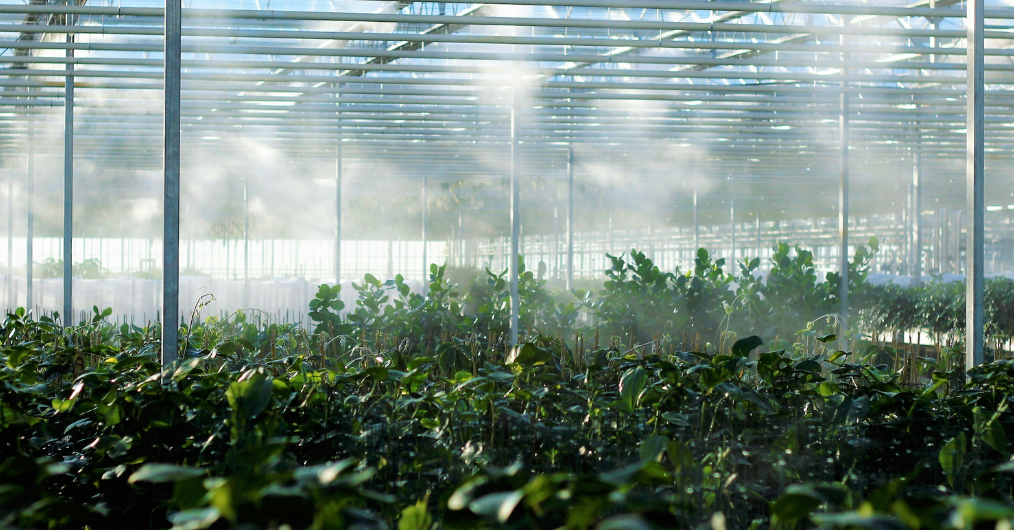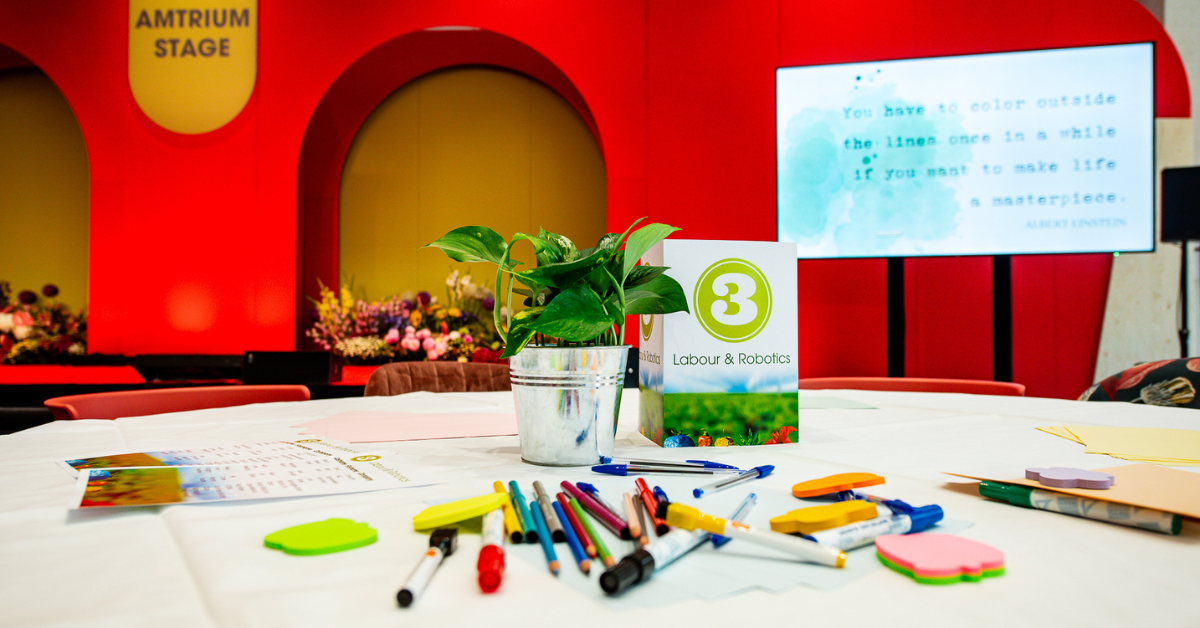‘Without robots, our food sovereignty will be at risk’
GreenTech is shining a spotlight on the transitions happening in the world today. With numerous challenges such as climate change, water scarcity, and the need for more sustainable practices, the current food production systems are being greatly affected. In a series of articles, we will delve into the challenges and opportunities of these transitions in the horticulture industry. In this article we focus on the need for robots in horticulture and we spoke with Nicolas Salmon of Aisprid, winner of the Robot Challenge at GreenTech Amsterdam 2024.
More and more horticultural entrepreneurs see robotization as a solution within their business operations as an alternative to expensive and scarce personnel, but also to increase efficiency in the company. Collaboration between developers from various disciplines, sector organizations and companies is a requirement for the successful development of robots. To emphasize this and to stimulate innovations in the field of robotics within horticulture, GreenTech Amsterdam has been organizing the Robot Challenge since 2022. The competition gives both established companies and start-ups the opportunity to introduce their innovative robots to a wide audience.
Safety and health
Albert van der Burg, expert in the field of labour with a focus on safety and health, is a member of the jury for the Robot Challenge. “In recent years, we have seen the level of submissions rise considerably, which is encouraging for the near future,” he says. This is partly because existing knowledge can be built upon. A good thing, according to Van der Burg, because he believes it is important that the development of robots within horticulture continues. However, he also believes that the safety and health of employees must be taken into account. “The question that is essential in the design phase, as far as I am concerned, is how robots can work together with employees in a safe manner.” Of course, robots must meet technical and innovative requirements, but Van der Burg also sees challenges in the aspects of safety and health. “The European Machinery Regulation sets essential safety and health requirements that products must meet, so that robots on the work floor ensure a pleasant and healthy environment. In addition, a robot should not cause residual work that still ends up with the employees. Any residual work is often repetitive in nature, which will increase the chance of physical complaints and absenteeism. Developers and users of robots should talk about these matters too and it is an important thing to focus on while designing a robot.”
Seven participants
This year, a total of seven companies participated in the Robot Challenge at GreenTech Amsterdam:
- Viscon Group introduced the Viscon Swiftpick Ttechnology, a next-generation technology revolutionizing pick-and-place automation;
- Organifarms launched BERRY, a harvesting robot for strawberries;
- Fravebot participated with the Fravebot Scout, a fully autonomous plant scouting robot;
- Saia presented the Saia Automated Greenhouse, a fully automatic planting system;
- Bosman van Zaal introduced the Smart Sleever for automatically sleeved plants;
- Corvus Drones participated with Corvus Drones Anomaly Detection, which can identify plant anomalies such as tip burn, leaf discolouration, yellowing and canopy coverage;
- And this year’s winner of the competition: Aisprid with the Aisprid D01.
The Aisprid D01 is an AI-driven autonomous robot for tomato plants deleafing. The company made its debut on GreenTech this year. “We are a 30 people startup founded in France in 2020 and have designed a smart robot for tomato plant deleafing”, says CEO and co-founder Nicolas Salmon. “All tasks which require interaction with a plant are the most challenging ones to tackle with robotics, with a lot of artificial intelligence embodied. That’s why we started as a ‘deep tech’ startup, with two third of our staff dedicated to R&D. Now we also have a team dedicated to robot manufacturing, as well as a team for customer service and maintenance, as we have grown with commercial deployments.”
The company has developed rapidly in a short period of time. “So far, we have been quite secretive in what we were doing and focusing only on the French market. This year was our first time at GreenTech, and since we have a robot with a worldwide potential, and with a technology more advanced than other robots we can see from competitors, we thought it would be a good idea to apply for the Robot Challenge.”
Biggest fleet of smart robots
Aisprid D01 is probably one of the first smart robots being used commercially in a tomato greenhouse, says Salmon. “Tomato deleafing is a very important task to be performed, almost as labour intensive as harvesting. To our knowledge, with 30 robots deployed so far, we have the biggest fleet of smart robots in the world, in tomato greenhouses.” The deleafing robot combines high-precision robotics with artificial intelligence to help growers now and in the future, says Salmon, with tomato plants deleafing as the first application. “We already won the Gold Prize at SIVAL in January this year. This brought us a lot of attention from French growers. Now that we also won the Robot Challenge at GreenTech, we think we will be known worldwide, which should help us scaling outside of France when the time is right. This prize comes from leading experts in our field, so this was a great recognition of our hard work so far.”
According to Salmon growers are more than willing to adopt robots. The challenge is to deliver a product providing good quality and good enough return on investment. “Once you have those criteria met, adoption of robots will go super-fast. See what happened with climate computers.” Salmon thinks robots can bring several advantages in horticulture. “They can provide an alternative to human labour which is becoming more and more scarce. Without this we risk seeing growers closing shop within the next 5 to 10 years, which is a threat for our food sovereignty.” Predictability is another advantage. “Even if a robot is slower than a human, 2 robots will pretty much work at the same speed. Contrary to humans when sometimes there can be a factor of 3 in terms of speed. So, it’s easiest to predict when a job will be done with robots. Also, a robot shows up every day at work and can work pretty much 7 days a week and 24 hours a day. And there is less risk of diseases being brought in the greenhouse from the outside.”
Challenge brings awareness
Aisprid will focus on the deleafing robot first, being able to handle all tomato varieties well. “Then we will probably tackle other crops like cucumber, which also needs deleafing and maybe going back to the harvest later on.” Salmon encourages others to compete in the Robot Challenge as well: “A challenge like this brings awareness of new technology to growers, as well as some level of validation that our product is advanced enough and not just a lab experiment.”
Have exclusive horticulture technology news delivered to your inbox
The GreenTech monthly newsletter brings you the latest exclusive horticulture technology news and updates about our global horticulture technology trade shows and events.
Join over 32,000 of your peers and receive:
☑ Exclusive commentary from industry leaders
☑ The latest news from the GreenTech team
☑ Stay up to date with all the latest news about our events




